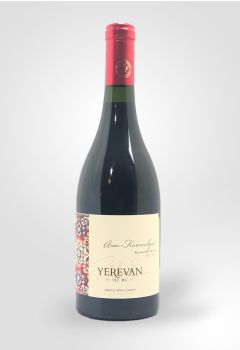
-
- Origin
- Armenia
- Aragatsotn
- Sasunik
This is a fresh and juicy, ruby red in colour with aromas of spice and raspberry jam. A delicious, savoury finish with great balance and structure. Read More- Origin
- Armenia
- Aragatsotn
- Sasunik
This is a fresh and juicy, ruby red in colour with aromas of spice and raspberry jam. A delicious, savoury finish with great balance and structure. Read More
The winemaking tradition in Armenia dates back to ancient times, with evidence of wine production dating as far back as 4100 BC. Throughout its history, winemaking has been an integral part of Armenian culture, rituals, and religious practices.
One of the defining features of Armenian wine is its indigenous grape varieties, such as Areni, which is believed to be one of the oldest cultivated grape varieties in the world. Areni grapes thrive in Armenia's diverse microclimates, producing wines with unique flavors and aromas that reflect the terroir of the region.
Armenian winemakers embrace both traditional and modern winemaking techniques, allowing them to craft wines that honor the country's heritage while also embracing innovation. Many wineries in Armenia employ traditional methods such as clay qvevri (large earthenware vessels) for fermentation and aging, imparting distinct characteristics to the wines.
In recent years, Armenian wine has experienced a renaissance, with a renewed focus on quality and innovation. The emergence of boutique wineries and passionate winemakers has led to a proliferation of high-quality wines that showcase Armenia's winemaking potential on the global stage.
Armenian wine offers a diverse range of styles, from crisp and aromatic white wines to full-bodied and robust reds. White wines made from indigenous grapes like Voskehat and Kangun exhibit vibrant acidity and complex flavors of citrus, stone fruits, and floral notes. Meanwhile, red wines crafted from Areni and Sireni grapes are known for their deep color, rich fruit flavors, and velvety tannins.


